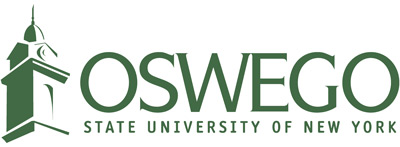Students in Oswego faculty member Candis Haak's history course, "Death, Data and Local Cemeteries (HIS 334)," are preserving local history through a hands-on cemetery project during the fall 2025 semester.
Haak and her students partnered with Riverside and Oswego Town Rural Cemeteries to clean and document Victorian-era graves, preserving local history with care and respect.
"Once we clean off these monuments, we'll have a better idea of Victorian Oswego's relationship to death," said Haak. "We'll be able to see ideas of class, of power, the afterlife, catalog all that information and then analyze the data."
While history courses are not typically taught outside the classroom, Haak hopes that applying the subject matter she is teaching to real-world scenarios will help students retain the information.
"Data can be a little scary to those of us in the humanities, so this is such a fun way to step into that data world," said Haak. "At every chance, I try to take our history students out to feel history, to get hands-on experience that they could bring with them far beyond my classroom."
Haak's idea for the course came from a personal passion for the history of cemeteries and the stories attached to them.
"These rural cemeteries were built at a moment in time when America wanted Americans to connect with their history and with nature, so they built these sprawling parks," said Haak. "It was meant not just for mourning, but it was also meant for the living to enjoy."
Haak feels that there is a lot for not only her students, but anyone living in the Oswego area to learn from our local cemeteries.
"I'm trying to bring us back" to the cemeteries, Haak explained. "This is a history book. There are scary stories attached to some of these people. You learn about your past, and you can talk about death in a way that's not scary. We just, as a society, don't talk about death the way we used to, and in general, people don't come to cemeteries the way we used to."
Community collaboration
Haak emphasized the importance of community partnership throughout this process.
“This work would not be possible without the support of the community,” Haak said. "When I first moved to Oswego and started to imagine this kind of class, I reached out to the community to gauge their response and right from the start, everyone has been so welcoming, so happy that we're engaging with these spaces."
History major Rory Kemp, an active-duty Army member, took an interest in its related urban forestry, and how planting, maintenance and upkeep reflect what the living have found important over time. Looking at gravestones all the way from back before Oswego was even a city, and the care and creativity put into them, contrasts with how cemeteries are not as much of a focus these days. “When stewardship is not as high a priority, it changes the way we view death,” Kemp said.
Kemp is using a tree survey conducted by Andrew Nelson, former director of the university’s Rice Creek Field Station, a Google Earth inventory from SUNY College of Environmental Forestry, and documents from local historians to get a holistic view of how the cemetery – and humans’ interactions with it –- has changed over the years.
“I’m going to take that quantitative data and study it to see what kind of progress it’s made since the urban forest was created, and look at the cultural aspect of how we interact with cemeteries," Kemp explained. “Being in nature in that way brings us closer to what can happen to us.”
The cemetery includes a silent witness to make of the region’s change in a Norway spruce that is around 310 years old. “It’s experienced a lot of change, climatically and with the things going on around it,” Kemp said. “It was a farm area, now it’s a cemetery. What that thing has weathered, we can’t even comprehend it.”
Haak also expressed her gratitude to those who work at Riverside and Oswego Town Rural Cemeteries for all their support with the class.
"The people who run and maintain our local cemeteries — Toby, Dewey, George DeMass and everyone who works with them — make sure we’ve got what we need. They help store our equipment, show us around, make sure the monuments are secure for my students. They even drive us around in golf carts! They are so important to making this class happen.”




